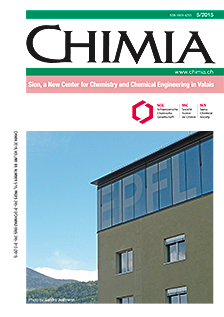Recent Advances in Carbon Capture with Metal–Organic Frameworks
DOI:
https://doi.org/10.2533/chimia.2015.274Keywords:
Co2 capture, Flue gas, Hydrolytic stability and regeneration, Metal-organic frameworks (mof), Mof synthesis, SelectivityAbstract
The escalating level of CO2 in the atmosphere is one of the most critical environmental issues of our age. The carbon capture and storage from pilot test plants represents an option for reducing CO2 emissions, however, the energy cost associated with post-combustion carbon capture process alone is ?30% of the total energy generated by the power plant. Thus, the generation of carbon capture adsorbents with high uptake capacities, great separation performance and low cost is of paramount importance. Metal–organic frameworks are infinite networks of metal-containing nodes bridged by organic ligands through coordination bonds into porous extended structures and several reports have revealed that they are ideal candidates for the selective capture of CO2. In this review we summarize recent advances related to the synthesis of porous MOFs and the latest strategies to enhance the CO2 adsorption enthalpies and capacities at low-pressures, increase hydrolytic and mechanical stabilities, and improve the ease of regeneration. Although they show great promise for post-combustion carbon capture, there are still major challenges that must be overcome before they can be used for such a large-scale application.Downloads
Published
2015-05-27
Issue
Section
Scientific Articles
License
Copyright (c) 2015 Swiss Chemical Society

This work is licensed under a Creative Commons Attribution-NonCommercial 4.0 International License.
How to Cite
[1]
Chimia 2015, 69, 274, DOI: 10.2533/chimia.2015.274.







